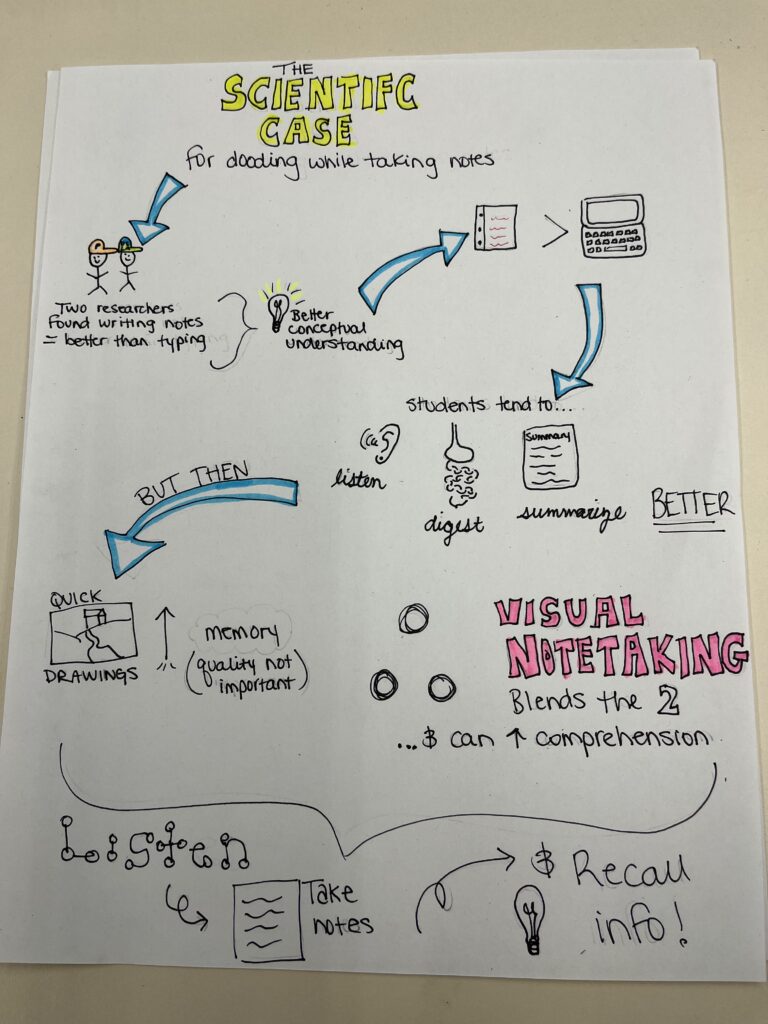Check out an info-graphic poster about today’s class! (Be sure to see point #3!!)
How can the SAMR theory of technology adoption help you evaluate technologies that you might consider using in your classroom? What about the SKETCH model?
First of all, I keep getting this all mixed up in my brain because every time I hear SAMR, all I think about is ASMR. … but anyways
SAMR theory of technology adoption can help with evaluation by breaking things down into 4 key steps:
- Substitution: tech acts as a direct substitution with no functional modification
- Adaptation: tech acts as a direct tool that helps to modify the function
- Modification: allows for a significant re-design
- Redefinition: tech allows for the creation of new format/tasks/lessons
I think this breakdown is important in order to help with the evaluation. Will this be beneficial for the students. Is your goal to modify a previously existing tool or to create something new? Although it is an important tool to help with this, it is still important to consider things like access to technology, school/school district privacy restrictions or regulations, etc. Is the technology safe? Private? 🤓 Along with this, I think the SECTION model may even be more useful. It breaks it down into seven parts; Students, Ease of use, Costs, Teaching functions, Interaction, Organizational issues, Networking, Security and privacy. Personally, I think this breakdown of categories or boxes to check is more realistic to use as a teacher looking to implement certain technological adaptations. It allows us to critically examine how appropriate the technology may be for our particular situations.
*remember: when using either the SAMR tool or the SECTION it is important to consider both strengths and the weaknesses.
Could sketch-noting benefit learners in the grade level you hope to teach at? If so how?
Personally, I think that sketch-noting, could help students at ANY grade level. I am wanting (I think) to teach a middle-school level. I believe that sketch noting could be very impactful. It may cater to different skills or types of learners that traditional notation styles do not. It made me think of dual code theory and how this is an important way to learn. Last semester, after taking our Art Pedagogy course 🎨 where we had to complete visual journals, we were inadvertently using a form of sketch-noting. Combining written notes with visual reminders. A big reminder is that YOU DON’T NEED TO BE AN ARTIST TO COMPLETE SKETCH-NOTING; even though this can be difficult to get comfortable with. A good example of not being an artist, but still being able to sketch-note, can be seen below with my sketch-note today from class!

jadeemmanemeth
February 12, 2022 — 12:23 pm
Hi Dayna,
I enjoyed reading your blog post this week as it was engaging and easy to follow. I also loved that you connected our art class journal to this weeks topic, I wish I would have thought of that. I agree with your closing message that you do not need to be an artist to sketchnote, but it can be hard when we are told from a young age that we “aren’t all artistic”.
Keep up the good work,
Jade
alee
February 16, 2022 — 9:23 am
Hi Dayna,
I agree with you that the SECTIONS model is going to be super useful as a teacher, and that it’s important to consider both strengths and weaknesses of technology! I loved that you shared the video of your visual art journal from last semester, and agree with both you and Jade that you don’t need to be an artist to do sketchnoting!
-A